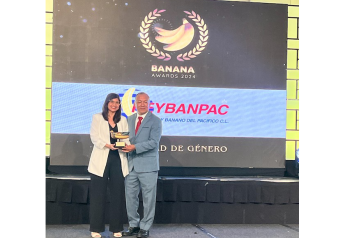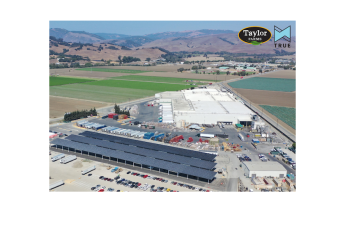Rabobank research finds reason for optimism for lemons

There are reasons for both optimism and caution in the lemon outlook for marketers, but optimism has the upper hand, according to a new report from Rabobank.
Authored by Rabobank produce analysts David Magaña, Cindy van Rijswick and Gonzalo Salinas, the 10-page spotlight report on lemons strikes a positive tone while noting some headwinds.
“While demand is still considered healthy, even in the presence of a fading ‘COVID effect,’ challenges abound,” a report summary said. Margin pressures are expected for lemon growers and exporters in 2022, as machinery, fertilizer, agrochemical, labor and transportation costs have significantly increased, the report summary said.
“Nevertheless, amid a challenging environment, opportunities still exist, particularly in the organic lemon market,” the authors said.
In addition, Magaña said in early March that the fading COVID-19 restrictions on restaurants appear to be over, which he said could spur higher foodservice demand in the months ahead.
During the past decade, per-capita consumption of fresh lemons in the U.S. has expanded at a compound annual growth rate of 4%, driven by the versatility of the fruit for both home and foodservice use, the fruit’s flavor and health-related benefits.
As mandarins are coming under pressure with higher supplies, the report said lemons may be an attractive choice for growers looking to expand other crops, especially in the San Joaquin Valley of California. At the same time, labor and water challenges are expected to be “limiting factors” for growth in California lemon acreage, according to the report.
The 2021-2022 U.S. lemon production is forecast to increase by 10% based on better volumes from California, according to the report. About 75% of U.S. lemons are used in the fresh market and 25% for processing, Rabobank estimates.
In the report’s price forecast analysis, Rabobank predicted that fresh lemon prices during the March through December time period may be marginally lower compared with the three-year average from 2019 to 2021. Peak lemon prices for the season are predicted for late July, according to the report.
While increased domestic production is expected to limit upside price potential for lemons, the authors said supply chain issues or lower-than-expected volume from South America could buoy the market above predicted levels.
Grower returns for lemons have been healthy in recent years, with 2020 grower prices of $23 per carton nearly double the grower price a decade earlier.
U.S. lemon imports have increased an average of 14% per year in the past decade, and Rabobank analysts expect the volume of lemon imports to continue to grow, especially in the U.S. summer months. Since 2017, Argentina has been able to ship to the U.S., and today, Argentina, Chile and Mexico account for 97% of U.S. lemon imports. According to Rabobank, imports accounted for about 21% of total utilization of lemons in the U.S. in 2020-2021.
Magaña said Argentina is already the largest global provider of lemons to the U.S., even after only a few years of market access.
Still, he said 2022 production from Argentina could be off about 8% compared with a year ago.
More importantly, he said exporters from Chile and Argentina will continue to face very high transportation costs, which add costs for shipments to the U.S.
Lower container rates aren’t predicted until the second half of the year, he said.
Export picture
The Rabobank report said logistics bottlenecks and lower domestic production have caused a recent slowdown in U.S. lemon exports.
One bright spot among export markets has been South Korea, which has seen 8% annual growth in U.S. lemon shipments. Exports now account for 12% of U.S. lemon production, according to the report.
Increasing overall demand in the U.S. has spurred growth in both imports and domestic production, the report said.
In 2020-2021, lemon-bearing area in the U.S. topped 57,000 acres, the highest level in more than a decade, according to the Rabobank report. Bearing acreage in California rose to 50,000 acres in 2020-2021, the highest in nearly 20 years. On the other hand, lemon acreage in Arizona hit a record low of just 7,300 acres in the same time period, the report said.







